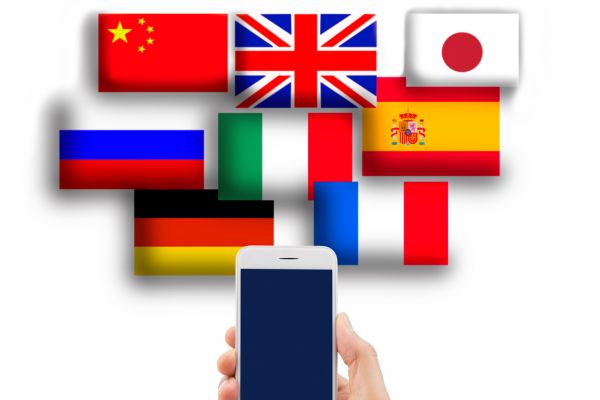In the era of digital learning, language learning apps for smartphones have revolutionized the way we acquire new languages. These apps allow learners to practice new languages at their own pace, any time, and anywhere. They offer a variety of interactive features, including listening exercises, reading passages, and pronunciation guides, providing a comprehensive learning experience. This article will explore the best language learning apps currently available for smartphones, highlighting their unique features, advantages, and potential challenges.
Duolingo: Making Language Learning Fun
Duolingo is arguably one of the most popular language learning apps, renowned for its gamified approach to language learning.
Through its bite-sized lessons, Duolingo makes it easier for learners to digest and retain new information. The lessons are structured as short games, making learning a new language fun and engaging.
Although Duolingo does not delve deep into advanced grammar and vocabulary, it is an excellent starting point for beginners. It also offers a wide variety of languages, including lesser-taught languages, broadening the learning possibilities.
Babbel: Structured Learning for Serious Learners
Unlike Duolingo, Babbel takes a more structured and traditional approach to language learning. It focuses more on conversation skills, making it an ideal choice for people planning to travel or live in a foreign country.
The lessons in Babbel are categorized based on the level of proficiency and include vocabulary, grammar, and conversation exercises. These lessons are comprehensive, allowing learners to develop a strong foundation in their target language.
Babbel requires a subscription, but the quality of its courses and the absence of ads make it worth the investment. It’s an excellent tool for individuals serious about language learning.
Rosetta Stone: Immersive Language Learning
Rosetta Stone has long been a leader in the language-learning field, initially offering CD-ROM courses before transitioning to an app-based platform. It employs an immersive teaching method, introducing learners to new words and phrases in the context of real-life scenarios.
Unlike other apps that use translation as a primary teaching tool, Rosetta Stone encourages learners to associate words and phrases with images and situations, thereby simulating the natural language learning process.
Although Rosetta Stone is more expensive than most language learning apps, its immersive approach, combined with its voice recognition technology that helps perfect pronunciation, makes it a valuable tool for committed learners.
Memrise: Learning Languages through Memorization
Memrise uses spaced repetition and mnemonic techniques to help users memorize new words and phrases. This approach makes it an effective tool for expanding vocabulary in a new language.
The app features videos of native speakers, which not only helps with understanding pronunciation but also provides insight into the culture and colloquial use of language.
Despite its focus on memorization, Memrise also offers grammar lessons and exercises, making it a comprehensive language learning tool. It is a particularly excellent tool for visual learners who excel at remembering images and patterns.
HelloTalk: Language Exchange on Your Smartphone
HelloTalk is a unique language learning app that connects users with native speakers of their target language for a language exchange. This live interaction can significantly enhance language learning, making it more practical and engaging.
The app provides tools such as translation, transliteration, and voice recognition to facilitate communication between users. It also offers a correction feature, where native speakers can correct your messages, providing real-time feedback.
While HelloTalk may not be suitable for absolute beginners, it is an invaluable tool for intermediate and advanced learners looking to practice and refine their language skills.
Pimsleur: Emphasizing Listening and Speaking Skills
Pimsleur is based on the language learning method developed by Dr. Paul Pimsleur, emphasizing listening and speaking skills over reading and writing. The app delivers language instruction through audio lessons, making it an excellent choice for auditory learners.
Each lesson in Pimsleur is half an hour long and designed to be completed each day. The lessons follow a specific structure, introducing new vocabulary, a conversation, and a pronunciation practice.
Although Pimsleur can be more expensive than other language apps, its scientifically-backed approach and emphasis on speaking and listening make it a worthy investment for serious language learners.
Anki: Leveraging Flashcards for Language Learning
Anki is a flashcard app that leverages the concept of spaced repetition to help users learn and retain new information. While it’s not exclusively a language-learning app, it can be an extremely useful tool for learning new vocabulary and phrases.
Users can create their own flashcards or use shared decks created by other users. Each card can include text, images, and audio, providing a multi-sensory learning experience.
While Anki has a bit of a learning curve compared to other language apps, its flexibility and effectiveness make it a valuable tool for language learners.
Tandem: Cultivating Language Learning Communities
Tandem is another language exchange app that connects language learners with native speakers. In addition to one-on-one conversations, Tandem also offers tutoring services from certified language teachers.
Tandem promotes language learning through social interaction, making the learning process more engaging and practical. The app also includes translation, correction, and pronunciation tools to facilitate communication.
Tandem provides an opportunity for cultural exchange, enhancing the language learning experience. However, like other language exchange apps, it may be more suited to learners who already have a basic understanding of their target language.
Lingvist: Data-Driven Language Learning
Lingvist uses artificial intelligence to create personalized language courses for each user. The app analyzes your performance and adjusts the lessons accordingly, ensuring that you focus on areas where you need improvement.
Lingvist offers exercises in vocabulary, grammar, reading, and listening. The app also includes real-life dialogues, providing context for the language you are learning.
While Lingvist’s course offerings are not as broad as some other apps, its data-driven approach and personalized learning paths make it a compelling option for individual learners.
FluentU: Learning Languages through Real-World Videos
FluentU uses real-world videos—like music videos, movie trailers, news, and inspiring talks—and turns them into personalized language learning lessons. This approach provides learners with an immersive and engaging learning experience.
Each video comes with interactive captions. If you see a word you don’t know, you can tap on it to see a definition, examples, and a useful image. You can also practice what you’ve learned through quizzes.
Although FluentU requires a subscription, its use of authentic content and its comprehensive approach make it a valuable tool for learning a new language in a contextual and enjoyable way.
iTalki: Connecting Learners with Language Teachers
Unlike many language learning apps that rely on algorithms and gamification, iTalki connects learners with professional language teachers for one-on-one lessons.
Users can choose a teacher based on their profiles, which include their qualifications, teaching style, availability, and reviews from other students. This allows for personalized instruction that can be tailored to the learner’s needs and goals.
While iTalki can be more expensive than self-study apps, its personalized instruction and the quality of its teachers make it an excellent choice for learners who prefer a more traditional and structured approach to language learning.
Clozemaster: Mastering Language through Context
Clozemaster helps users learn a language through mass exposure to vocabulary in context. It presents sentences with a missing word (a “cloze”), and the user must fill in the correct word from multiple choices.
This approach helps learners understand how words and phrases are used in context, improving their language comprehension and usage skills.
While Clozemaster might not be ideal for absolute beginners, it’s a fantastic tool for those who have the basics down and want to improve their fluency and understanding of a language.
Busuu: Comprehensive Learning with a Social Twist
Busuu offers comprehensive language courses that cover all aspects of language learning, including vocabulary, grammar, listening, speaking, and writing. It also provides specialized courses to help users achieve specific language goals.
What sets Busuu apart is its social feature, which allows users to interact with native speakers through writing and speaking exercises. Native speakers can correct these exercises, providing learners with valuable feedback.
With its comprehensive courses and interactive community, Busuu provides a balanced approach to language learning that combines self-study with practice.
Glossika: Language Learning through Sentence Practice
Glossika uses a “sentence-based” method for language learning, emphasizing listening and repeating sentences over vocabulary memorization. This approach is designed to improve language fluency and comprehension skills.
Glossika offers thousands of sentences in a variety of topics, covering a wide range of vocabulary and grammar. The app also uses spaced repetition to ensure that learners review material at the right intervals for maximum retention.
While Glossika may be overwhelming for absolute beginners, it’s a powerful tool for intermediate and advanced learners aiming to improve their fluency and speaking skills.
LingQ: Reading and Listening for Language Learning
LingQ (pronounced like “link”) is a language learning app that emphasizes reading and listening as the primary means of learning a language. It offers a vast library of lessons in different languages, which include a transcript and an audio recording.
Users can “LingQ” new words or phrases that they don’t know, turning them into flashcards for review. The app also tracks your vocabulary progress over time.
While LingQ’s interface can be a bit cluttered, its focus on extensive reading and listening, along with its tracking features, make it a valuable tool for language learners.
Quizlet: Flashcards and More for Language Learning
Quizlet, while not exclusively a language-learning app, offers features that can aid in language acquisition. Users can create their own study sets or choose from millions created by other users.
Quizlet goes beyond traditional flashcards, offering interactive games, quizzes, and even the ability to create diagrams. This variety keeps studying interesting and caters to different learning styles.
While Quizlet might not provide the structure needed for complete language learning, it’s a fantastic supplementary tool to aid in vocabulary acquisition and retention.
Drops: Visual Learning for Vocabulary Acquisition
Drops focus on helping users acquire new vocabulary through fun, quick, and visually engaging exercises. Each word or phrase is accompanied by an image, aiding in memory retention.
In addition to individual words, Drops also teaches phrases and provides information on gender and plural forms. The app uses spaced repetition to ensure effective retention of words.
With its visual approach and its focus on vocabulary, Drops is an excellent tool for beginners or for those looking to expand their vocabulary in a new language.
Mondly: Interactive Language Learning
Mondly provides a range of lessons covering vocabulary, grammar, and conversations. What sets Mondly apart is its use of augmented reality (AR) and virtual reality (VR) for a more immersive learning experience.
The lessons are interactive, including quizzes and exercises where you have to form sentences. The app also includes a chatbot for conversation practice.
With its use of advanced technology and interactive lessons, Mondly makes language learning a fun and engaging experience.
Mango Languages: Practical and Cultural Language Learning
Mango Languages offers courses that not only teach language but also cultural insights. This approach helps users understand the context and usage of the language they’re learning.
The lessons include a variety of exercises, including listening, reading, and speaking. The app also includes a voice comparison feature to help with pronunciation.
While Mango Languages requires a subscription, its focus on practical language and cultural learning makes it a unique and valuable language learning tool.
Language Learning with Netflix: A Fun Approach to Language Learning
While not a traditional language learning app, the Language Learning with Netflix Chrome extension can be a fun and effective way to learn a language. It allows users to watch Netflix shows with two sets of subtitles, one in the target language and one in their native language.
This method helps learners understand the context and usage of words and phrases in real-life situations. It also provides an enjoyable way to learn a language through entertainment.
However, this tool should be used as a supplement to structured language learning, as it does not provide explicit instruction or practice exercises.
Conclusion
Language learning apps have transformed the way we learn new languages, making it more accessible, flexible, and enjoyable. Each app offers unique features and learning methods, catering to different learning styles and goals. Whether you’re a beginner looking for structured lessons or an advanced learner looking to practice with native speakers, there’s an app out there that fits your needs. Happy learning!



